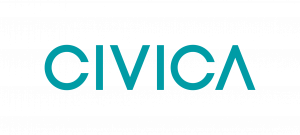There is a term that has flooded the data and analytics world, and that term is data literacy. Data literacy is a powerful term that individuals and organizations are embracing and adopting. In this blog I’ll share my understanding of what ‘data literacy’ is.
To begin, let’s define this field. The definition I will use is one I have used for ever and comes from Qlik, who adopted it from a definition built by two people from MIT and Emerson University. The definition is: “The ability to read, work with, analyze, and communicate with data”. Pretty straightforward, right? Notice what term is not present? The term ‘data science’. Not everyone needs to be a data scientist, but everyone needs to be data literate!
One thing to clarify is that everyone is already data literate, to a degree. Don’t feel you are not! Data literacy does not mean you need to be a technical data professional. It doesn’t mean you need to go back to school and learn statistics. It means everyone should be confident and comfortable in using data.
Now, let’s dig into the four characteristics of data literacy.
The first characteristic is the ability to read data. This may be the most important characteristic and it is the one I call the most important. If you can’t read the data, how do you work with it, analyze it, and communicate with it? The reality is you can’t do it effectively. To read data means you look at the data and understand it. In our day and age, data comes at us in different forms and methods. Develop your ability to read data.
The second characteristic is the ability to work with data. Working with data has varying levels. If you are an executive, you don’t have time to do all the concrete, digging in deep work. You may work with data by just receiving dashboards, powerpoints, data stories. You then read the data. If you are an advanced data practitioner, you will be doing deeper work with the data. Overall, find where you will be working with the data and rock it.
Third, analyzing the data. There are four levels of analytics. Develop your skills within them, and get good at asking questions about the data, which can then spark analytics. This may be your only skill with analytics but hone it and rock it!
Finally, communicating with data. If reading data is the most important, this is the secret sauce of data and analytics. Imagine creating such amazing insight through analytics and then not having the ability to communicate it? Develop your skills to communicate with data. Also, develop your listening skills so that you know what someone is truly wanting or asking for. Communication is not just a data literacy skill; it is a life skill.
So, there you go – the four levels of analytics. How can you improve in these areas? I’ll give you my 3 Cs of data literacy.
First, be Curious. Ask questions… lots of them! Do not stop asking questions. As adults, we stop asking questions…I don’t know why. Remember being like a little kid? They ask a lot of questions… a lot! I have five kids, so, I know. But we need to be like kids.
The second C is Creativity. Be creative. Use your creativity, imagination, your human element. In data and analytics, we don’t want to get rid of the human element, no, we want to combine it with the data. Use your creativity within data and analytics. Don’t let data and analytics roll without you.
The third C is Critical thinking. Please, please, please use critical thinking on data. Question it. Be creative with it. Critically think on it and roll. Overall, data literacy is here, and it should never leave. Empower yourself and your organization with data literacy skills!
Jordan Morrow is the author of Be Data Literate – The Data Literacy Skills Everyone Needs to Succeed and Be Data Driven: How Organizations Can Harness the Power Data. Hear more from Jordan at Housemark’s Housing Data and Analytics Summit – the only data event dedicated to the housing sector at The Rep Theatre in Birmingham on 6 October 2022. Discover more and book tickets here.
Headline sponsor

Supporting sponsor

Roundtable sessions sponsor

